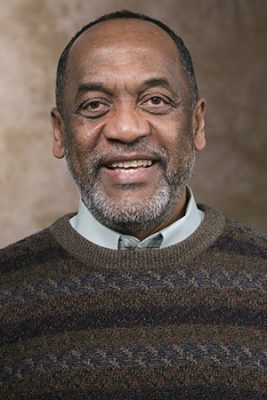ExxonMobil says that the use of radioactive materials in its operations here is done according to International Atomic Energy Agency (IAEA) standards and it has submitted a key document on related matters to the Environmental Protection Agency (EPA).
“All radioactive sources used for our operations are managed in accordance with environmental permits and strict safety standards such as those set out by the International Atomic Energy Agency,” the company said in response to questions from Stabroek News.
“There is no treatment or disposal of radioactive sources in Guyana,” it also pointed out.

As some members of the public voiced concern about the location and treatment of hazardous waste coming from oil and gas production, former Director of the Environmental Protection Agency (EPA) Dr. Vincent Adams last week told this newspaper that he had introduced a “cradle to grave” principle used in the US regulations and set it as a requirement for ExxonMobil to develop and deliver to the EPA for approval.
ExxonMobil was asked about this and it said that it had completed the study and submitted it to the EPA but the agency had asked for clarifications on some issues, which are being addressed for response later this month.
“We submitted a `cradle to grave’ waste analysis study to the Environmental Protection Agency earlier this year, and we have since received comments and requests for clarification which are currently being addressed. We plan to submit our responses later this month,” ExxonMobil’s local Public Relations and Government Affairs officer Janelle Persaud told this newspaper.
Adams said that he is pleased to know that the company did submit the document but is still concerned over the nation’s human resource capacity to assess, given that the EPA currently doesn’t have the specialist personnel to manage the process.
“The process includes the development and approval of waste acceptance criteria documents of third party treatment facilities and landfill that will ensure that the facility has the capability to treat the pedigree and characteristics of the waste accepted, to the regulatory standards for treatment disposal.
“Here again it shows the urgent necessity for the government to invest in the capacity building of the agency, specifically to invest in training of its employees, including … abroad (at) companies involved in handling these types of waste that come with the petroleum sector and is new to Guyana,” he added.
He underscored the need for overseas training in areas new to this country, pointing out that some staff had gone to the United States, Trinidad and the United Kingdom and he hopes that the EPA continues to invest in its human resources.
Adams told this newspaper that “the cradle to grave principle means that ExxonMobil and not just third party companies would be responsible for the waste and all of its residuals emitted in the air, water, and solids from the time the waste is generated to its final disposition, such as burial.”
Adams had also introduced what he termed the standard principle of having a “waste acceptance criteria” that must be applied by all treatment and/or waste disposal facilities, after approval by the EPA. He set this requirement for ExxonMobil’s main waste manager at the time, Tiger Tanks or any other treatment facility to have “waste acceptance criteria” to ensure that their facility has the necessary equipment to treat the waste being handed to them by ExxonMobil.
“This waste acceptance criteria would have required a full analysis of the waste received by them to be sure that it doesn’t exceed the concentrations and capabilities that they are designed to handle. Any waste type or concentrations exceeding that criteria means that the facility is not capable of handling that waste to get it to the required safe treatment levels and therefore has to be rejected,” he said.
“I imposed upon Exxon that they would have to be responsible for all of the waste from the time it is generated (cradle) through treatment and to final disposal (grave) of whatever is left over. They are also responsible for emissions which enter the air, water and soil during treatment,” he had explained.
“There is a rule of chemical law that matter is never destroyed. So, for example, in the case of Incineration when you burn, if you put a pound of waste in, you get a pound back out. However, it comes out in different pieces. Some will go into the air in the form of such contaminants as carbon dioxide and hydrogen sulfide, some in the water, and some in the residual solid ash. The types of emissions in the air, water and soil and their quantities, all depend upon the characteristics of the waste and the equipment treatment capabilities,” he added.
Concerns have been raised by Houston, East Bank Demerara (EBD) residents about approval being granted for the setting up of a waste treatment facility in the village. Last year, Coverden, EBD residents also raised the same concerns.
The EPA recently announced that approval was also given to another company for the storage of a radioactive source at Coverden not far from where the waste storage facitlity was proposed to be sited.
Dr. Adams said he could recall that “Halliburton had applied for a similar permit” and he had attended a meeting of the Board of the Central Housing and Planning Authority where that company had to give a presentation on how they would handle the sources to ensure no exposure to the public during storage, transportation and use.
“Of major concerns were the securing of the sources during storage and transportation so that it won’t get into the wrong hands, or someone breaching the storage facility and getting access to the sources,” he said.
It is unclear whether Halliburton was issued the permit. This newspaper has been trying for months to schedule an interview with current EPA Director Sharifah Razack to no avail. Emails have not been replied to and calls to her office have always been met with comments that she was either busy or out of office.







